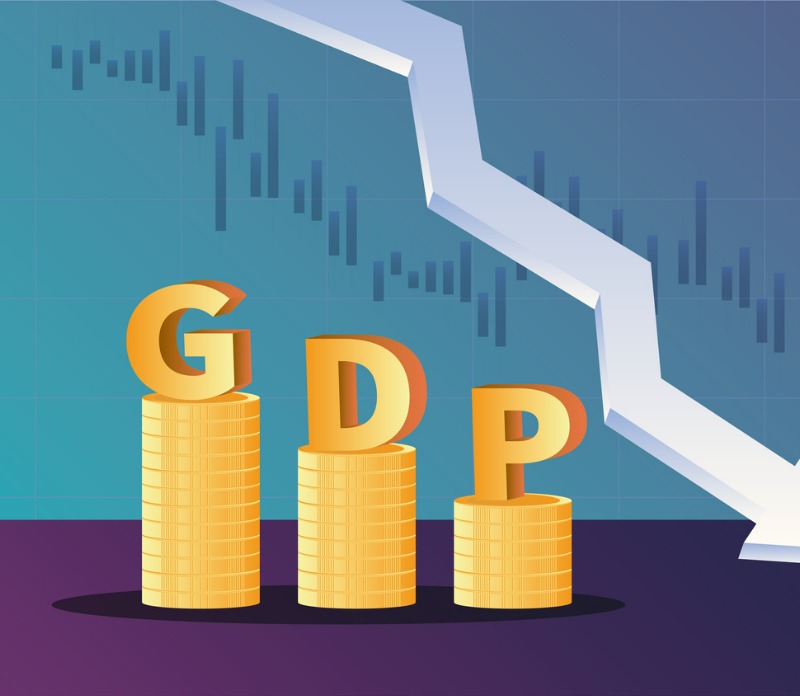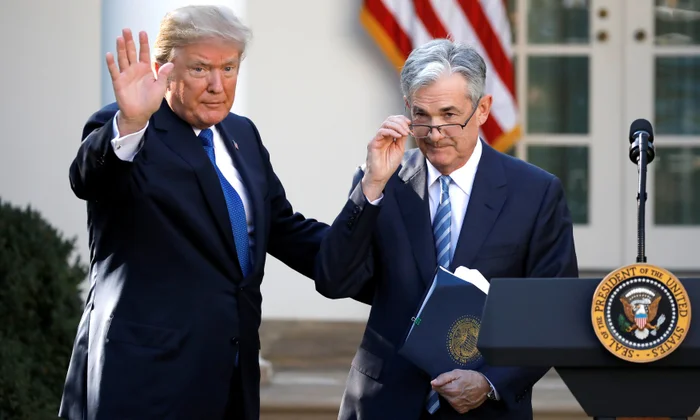It’s Trump’s Economy Now. Washington — President Donald Trump’s promise of a 2025 “economic golden age” is increasingly under scrutiny. Recent indicators suggest that behind the official slogans, cracks are expanding in job creation, growth momentum, and consumer confidence—notably as the fallout from sweeping tariff hikes unfolds.
Table of Contents
1. Labor Market Slows Sharply
The latest Bureau of Labor Statistics report revealed that the U.S. economy added just 73,000 jobs in July, a marked slowdown from prior months and well below consensus estimates of 110,000. Revisions to previous months shaved a combined total of 258,000 jobs from May and June, reflecting a sharp deceleration in hiring. The unemployment rate ticked up slightly, from 4.1% to 4.2%.
Manufacturing jobs are shrinking: employers have shed 37,000 manufacturing positions since April, despite administration rhetoric about a factory resurgence. Federal workers in healthcare and government also saw job losses, while only healthcare and social assistance added modest gains. It’s Trump’s Economy Now.
The administration’s response was explosive: Trump fired BLS Commissioner Erika McEntarfer shortly after the report’s release, alleging political bias in the data. Critics argue the move endangers the objectivity of official economic statistics and undermines trust in public institutions.
2. Growth Slows Despite GDP Rebound
Second-quarter 2025 GDP numbers showed a rebound—from a sluggish Q1—but underlying fundamentals remain weak. On an annualized basis, GDP grew 3.0% in Q2, yet weaker private domestic spending meant underlying growth averaged closer to 1.2% for the first half of the year, down from 2.4% at the end of 2024. According to The Wall Street Journal and The Guardian, the growth spike may have been partly driven by inventory adjustments and volatile trade flows rather than demand-driven expansion.
The surge in exports and frozen imports offer a statistical boost without reflecting a fully healthy economy. Key metrics—like final sales to domestic consumers—are growing at just 1.2% versus 3% the prior year.

3. Inflation and Trade Volatility
U.S. inflation has ticked up in recent months. The consumer price index for June rose 2.6% year over year, up from 2.2% in April. The PCE (Personal Consumption Expenditures) index echoes that trend—signaling increasing cost pressures across heavily imported items such as appliances, furniture, and toys.
President Trump has insisted the Federal Reserve cut benchmark interest rates, warning of inflation risks. His public criticisms of Fed Chair Jerome Powell have raised concerns about political influence over monetary policy. At the same time, two Fed governors—Christopher Waller and Michelle Bowman—voted for rate cuts, citing a weakening labor market.

4. Tariffs—Revenue Up, Resentment Rising
Trump’s second-term protectionist trade blitz has brought tariffs on over $1.4 trillion in imports—nearly four times the scope of the first term’s tariff base (~$380 billion). As of mid-2025, the average U.S. import tariff rate has climbed to 18.4%, the highest since the 1930s.
Trade policy confusion and uncertainty have disrupted business planning, tightened supply chains, and sharply depressed investor sentiment. Container bookings from China to the U.S. plummeted by 64% in early April—creating real supply risks for consumer goods and medical products like surgical tools and pharmaceuticals.
Businesses across sectors—from healthcare to retail to manufacturing—have reported rising production costs. Many are choosing to absorb some of those costs into margins, delaying price hikes; but analysts estimate that U.S. households may pay as much as $4,000 more annually as a result of tariff-related inflation.
5. Markets Mixed: Tech Strength vs. Main Street Strain
Wall Street and the U.S. tech sector remain relatively buoyant. Major players like Apple, Meta, Microsoft, JPMorgan, and Goldman Sachs posted substantial earnings growth in Q2—up 41% and 12.8% respectively for tech and financials—even as many small and mid-sized consumer-linked firms saw margin compression.
Yet broader confidence is fragile. Investment in consumer-facing industries is declining; hiring stalls; and investor risk sentiment is heightened. Stock market volatility, especially in small caps and industrials, has increased significantly due to policy uncertainty.
6. Fiscal Policy and Inequality
Trump’s sweeping tax overhaul, dubbed the “Big Beautiful Bill” (BBB), slashed rates for higher earners and corporations, while critics note deep cuts to social programs like Medicaid and SNAP. Analysts warn such policies could increase deficit spending by $3.4 trillion over a decade, undermining long-term fiscal stability and widening inequality—despite short-term business gains.
Some economists argue the long-term economic resilience of the U.S. could erode, especially as global capital flows pivot toward Europe, Asia, and emerging markets amid perceptions of U.S. economic mismanagement.
7. Public Sentiment: Rising Cost of Living, Deepening Anxiety
New polling from The Century Foundation indicates more than 60% of Americans believe the Trump economy has worsened their cost of living. Many report skipped meals, reliance on credit, dipping into savings, or borrowing money to make ends meet. Over 70% say it’s harder to afford education, housing, or childcare since Trump took office.
As Washington cuts social safety nets and businesses raise prices, financial insecurity is proliferating—even in households not counted in headline metrics.
8. Economic Outlook: Mixed Forecasts Ahead
Recession or Resilience?
- Bank of America predicted last week that the U.S. may avoid stagflation, instead entering a cyclical recovery led by stimulus, infrastructure investments, and AI funding. Its Regime Indicator suggests six economic metrics are trending upward, signaling possible recovery paths ahead.
- However, OECD and Federal Reserve forecasts suggest cooling growth—projecting 1.7% to 2.2% growth in 2025, down from 2.8% in 2024. Inflation expectations are rising slightly (to 2.7% vs. 2.5%) and job losses could exceed half a million if tariff pressures persist.
Global Impact
- Economist Philip Coggan recently warned that Trump’s tariff regime risks global supply-chain disruptions, a 1% GDP drag for the EU, and unstable trade patterns worldwide. He argues that protective tariffs may linger beyond Trump’s presidency due to bipartisan shifts away from free-trade orthodoxy.
- The Washington Post notes that the unilateral restructuring of global trade—sidestepping traditional multilateral alliances—has resulted in fragile trade deals and uneven global recovery. While the administration claims success, many of the newly announced agreements lack enforceability or long-term economic value.
9. Key Risks & Indicators to Watch
| Risk Factor | What to Watch |
|---|---|
| Labor data revisions | Further downward revisions to June–July jobs |
| Inflation metrics | Consumer prices and PCE beyond trends |
| Tariff rollovers and legal challenges | Additional hikes or WTO disputes |
| Corporate earnings trends | Differentiation between mega caps and SME profits |
| Consumer sentiment & spending | Retail sector metrics, credit usage data |
If job growth continues to disappoint and inflation remains sticky, markets may price in even sharper downside risks. Conversely, rate cuts in September or progress on trade deals could provide a temporary rebound.
10. Final Verdict: Early Promise vs. Emerging Weakness
President Trump and his administration have delivered a volatile mix: headline-grabbing GDP gains, aggressive tariffs, and a revived stock market narrative—alongside growing doubts from businesses, citizens, and economists.
Whether Trump can deliver sustained middle-class prosperity—or merely provoke transitional turbulence—remains uncertain. Policy gambles are mounting, and the coming months may determine if “It’s Trump’s economy now” becomes a cautionary tale or a comeback story
